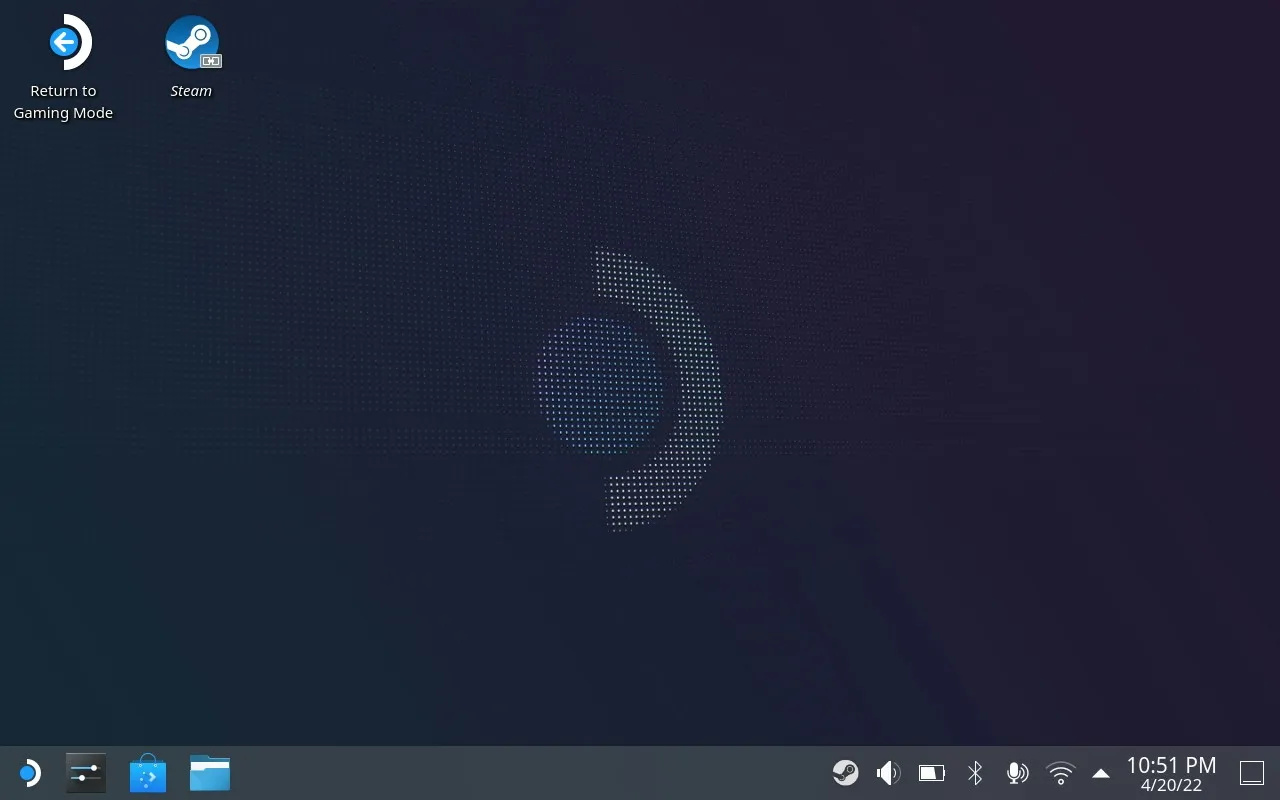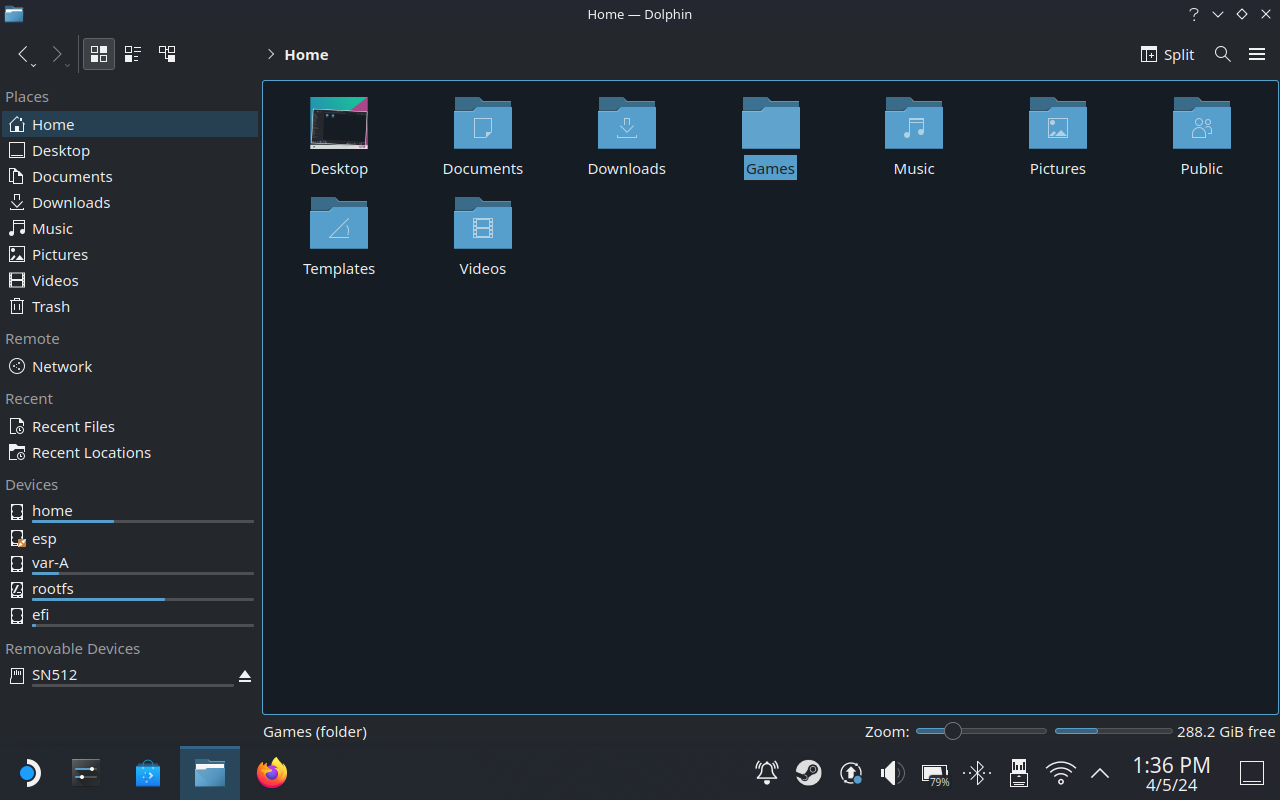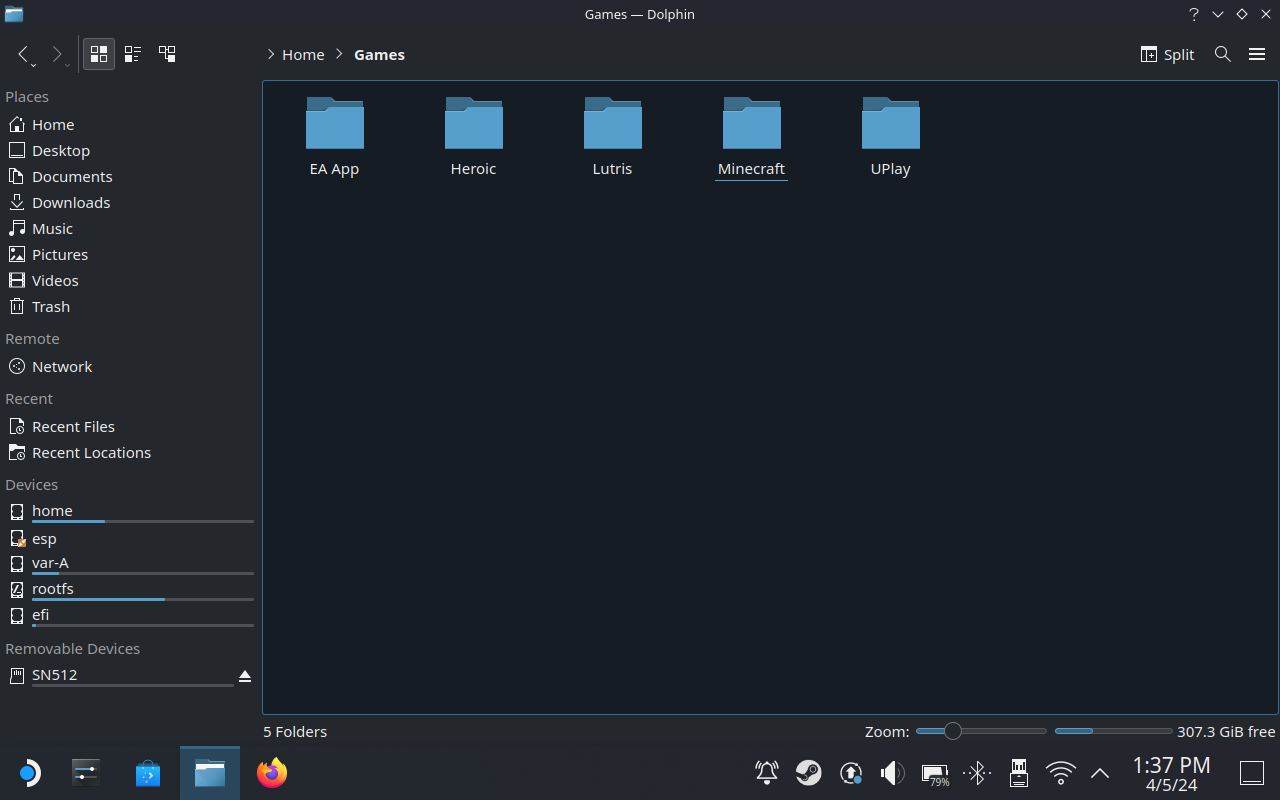Manuals
1. Introduction 2. File Management 3. Lutris Launcher 4. Heroic Launcher 5. PS2 Emulation (PCSX2)
File Management
SteamOS uses Plasma desktop interface system to deliver a Windows-like user-interface and experience. While it looks straight forward to use, there are some mentionable tips to keep in note.

Things to know before starting...
1. Linux lets you change and modify EVERYTHING! That means
you can easily destroy your software system if you do not know what you are doing. This is a general Linux rule.
2. There is no registry system like Windows on Linux. What you install on Linux can
easily be executed, modified and uninstalled. Since SteamOS offers the Discovery app, it makes it much easier to install
and uninstall apps with ease.
3. The file structure of Linux is not the same as Windows. This means that your appdata,
game saves, and other file configuration are in a different location. So saving a shortcut to a game or a file which you
modify often modify will come in handy.
4. The Discovery app (which is pre-installed) is a good place to find essential softwares
you need to get started. However, bare in mind that some apps from Discovery might be outdated and the best way to get the
apps are from their main source.
How to manage non-Steam/non-DRM games and softwares?
Unlike Windows, there is no Registery system on SteamOS. Instead, you can easily execute Linux-native softwares straight from
the box. And uninstalling it is as simple as deleting it.
The best way to install games and software which are non-DRM is by installing them in 'Home' section.
Simply make a new folder
(in this case, I named it 'Games') in your 'Home' and create sub-folders for organizing purposes. That way you can keep track of what
you install and where you can manage.


Where are my Steam Games installed? (For Modding purposes)
Modding games is as easy as modding on your PC. However, it is highly advised to mod your games on your primary Windows PC as some games require third-party tools to install mods. And later you can move the modded files to Steam Deck using SD Memory USB. The address below is where Steam installs games and softwares.
/home/deck/.local/share/Steam/steamapps/common
Where is the AppData and App ID in SteamOS?
Most games write data such as saves and settings on 'My Documents' folder on Windows, and some on the AppData folder. In SteamOS' case, you can find your game saves and its settings at this address:
~/.local/share/Steam/steamapps/compatdata/12345/pfx/drive_c/users/steamuser/AppData
The '12345' number is the App ID for the game. In order to find the ID, you can check the game's Steam store's URL, here is an example of the App ID of Grand Theft Auto V.
store.steampowered.com/app/271590/Grand_Theft_Auto_V/
